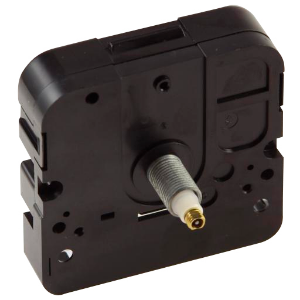
Add Clock Parts to your contacts.
Premium feature, preview only
Add Clock Parts to your contacts.
Premium feature, preview only



Clock movements are the heart and soul of any type of wrist watch, whether analog or electronic, whether modern or antique. Clock movements are additionally referred to as motors, and also their feature is to rotate the hands on a constant basis so that the clock always represents the right time. Thus, we're talking about a rotating electric motor that must use a specific quantity of minimal torque upon its load, the hands, to achieve its job.
Clock movements are standardized according to the most commonly utilized applications. What this indicates is that the electric motor is designed to give adequate torque to cover hand weights approximately a provided limitation however can not turn minute hands (heavier than hr hands) evaluating more than this.
In method the weight restriction for the most popular clocks corresponds to a size of regarding 5 inches. In other words, hands with sizes higher than 5 inches will certainly in general existing also heavy a lots for the motor, creating the turning to drag and even quit entirely. Hands shorter than the limitation will certainly create the motor not a problem.
Yet the product made use of to make the hand also comes into play. Light steels such as tin or aluminum provide a smaller lots than ones made from brass, for example. So the 5-inch standard is a catchall amount, as well as traditional movements may have no problem transforming lightweight hands longer than this.
The standard method of structure movements was simply mechanical. The driving force was a tightly wound spring or a hanging weight putting pressure on a wheel to transform. To prevent the wheel from turning openly and as well swiftly it was controlled by means of an escapement and pendulum in mix.
The system was adjusted such that the pendulum ticked once a 2nd. Gears in predetermined proportions developed a network all driven by the flywheel, and the numerous hands were mounted on spindles that rotated at specifically the appropriate rate.
Today's clock motion operates digitally instead of mechanically. A quartz crystal generates vibrations that take place at a dependably determined regularity. Numerical counting registers accomplish neighborhood of the crystal frequency right into suitable timekeeping values.
The hands in the electronic variation run similarly as in the mechanical variation, yet powering their rotations is simpler. Instead of a drivetrain, pendulum, and escapement setup the power is electrical as well as the rotational regularity is stemmed from the counting registers crossing numerical limits.
Now, we are used to envisioning traditional clock dials when we discuss hand placement, yet that's not constantly the situation. There are wrist watches that in fact show weather sensations, such as temperature level or moisture or specifically tide level. Occasionally these appear as committed faces, and often an unique dial-and-hand arrangement is incorporated into a larger clock dial.
Another aberration from the standard is the 24-hour analog clock. Here, the hour hand makes a cycle daily instead of two times a day. An unique dial is used showing labels for the full set of 24 hr, often requiring a larger size and correspondingly bigger hands.
Obviously, when the clock face is unconventional, the movement has to be calibrated to it so that the hands line up properly. But regardless of the application, all hands have to be turned, some a full 360 levels, others backward and forward via a restricted arc. And such rotation calls for torque from the motor.
As mentioned before, common movements are geared up to take care of lots that are frequently found in the majority of applications. Yet larger clocks (more than, say, 14" in diameter) use longer and therefore heavier hands than typical. Likewise, normal-sized hands constructed of larger materials might surpass the tons tolerances of a common movement.
However it is commonly the case that movement capability is copied in a high torque version. Hence the user should look for such alternative versions if needed. And that's all one needs to understand about high torque clock movements clock dial face fit ups